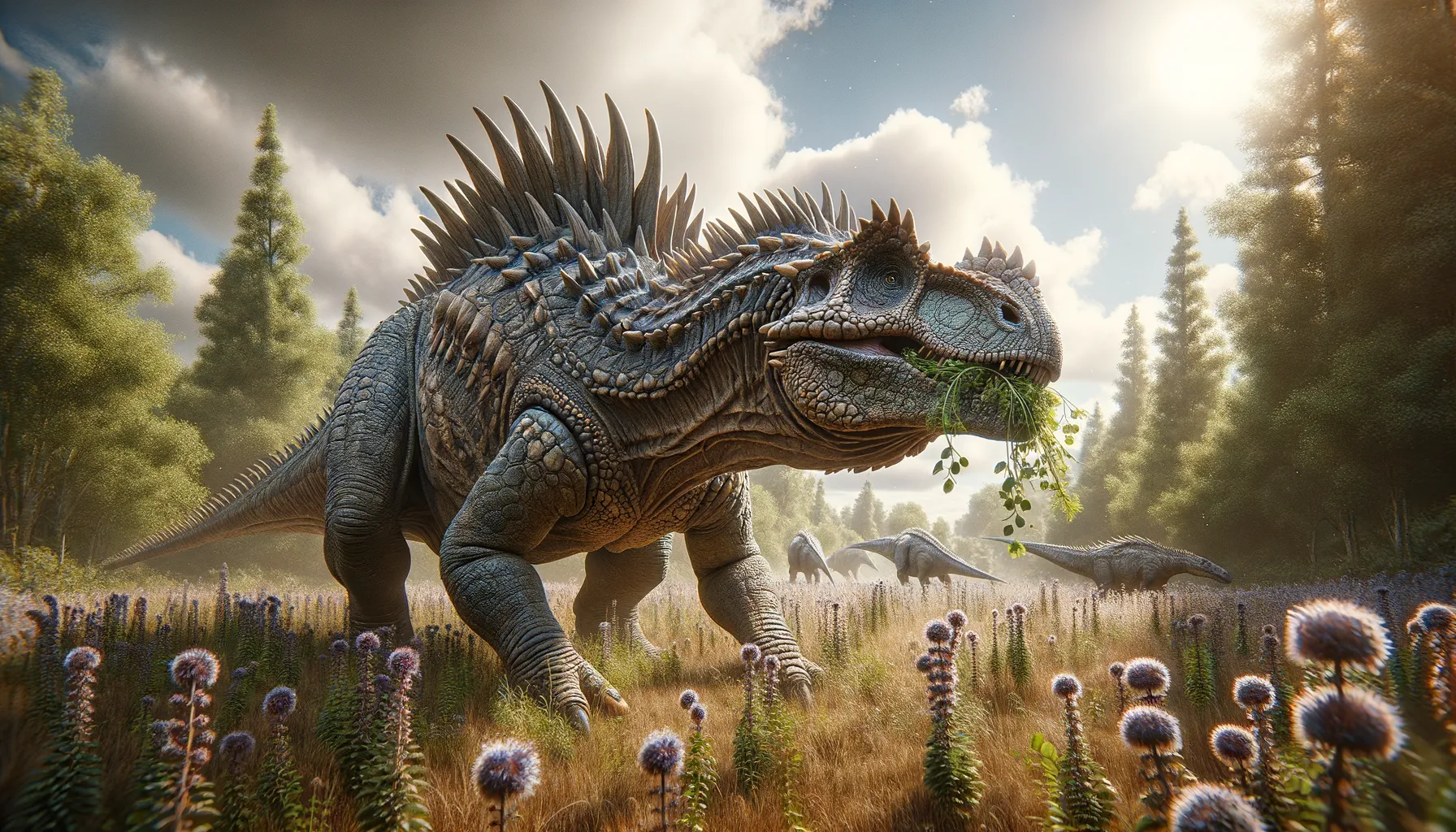
Sauropelta
An armored fortress of the ancient plains.
Period
Cretaceous
Length
Ranged from 5 to 7 meters long.
Height
About 1.5 meters at the shoulder.
Weight
Approximately 1.5 to 2 tons.
Sauropelta was a heavily armored dinosaur that roamed the earth during the Early Cretaceous period. Known for its distinctive body armor with large spines protecting its neck and back, it was a herbivore that munched on low-lying vegetation. It walked on four legs and had a low-slung body designed to keep predators at bay. This dinosaur is a striking example of the diverse array of armored dinosaurs that flourished during this era.
Diet
Sauropelta was an herbivore, primarily feeding on low-lying plants and vegetation. Its strong jaws and teeth were adapted for grinding tough plant material, allowing it to maintain a steady diet of ferns and cycads.
Hunting
As a herbivore, Sauropelta did not hunt other animals. Instead, it foraged for food among the dense foliage of its habitat, using its keen sense of smell to locate edible plants.
Environmental challenges
Sauropelta faced the challenge of evading predators like theropods, so its extensive body armor was crucial for defense. Climate fluctuations would have affected the availability of its plant-based food sources. Its body structure and adaptations allowed it to navigate through dense vegetation and find shelter. Addressing these challenges was essential for its survival and reproductive success.
Speed
Sauropelta was relatively slow-moving due to its heavy armor.
Lifespan
It likely lived around 50-70 years.
First discovery
Sauropelta was first discovered in Wyoming in the early 20th century.
Fun Facts
- Sauropelta was a heavily armored dinosaur known for its distinctive shoulder spikes.
- It lived during the early Cretaceous period, around 115 million years ago.
- Sauropelta's name means 'lizard shield' due to its protective body armor.
- It was a herbivore and likely graze on low-growing plants.
- Sauropelta's armor included bony plates embedded in its skin, offering protection from predators.
- This dinosaur was relatively small compared to others, measuring about 16.5 feet in length.
Growth and Development
Sauropelta likely had a slow growth rate, with juveniles gradually developing their protective armor over time. This slow growth may have allowed individuals to refine their survival strategies as they adapted to their environment. The development of its characteristic armor likely came at considerable energy expense. Once fully developed, its armor provided a significant survival advantage.
Habitat
Sauropelta thrived in lush environments with abundant vegetation, such as floodplains and forested areas. These habitats provided ample food supply and cover from potential predators. The varied terrain offered opportunities for nesting and raising young safely. Adaptations in its limbs and body allowed it to traverse these environments efficiently.
Interaction with other species
Sauropelta's primary interaction with other species was likely defensive, given its armored nature. It coexisted with other herbivorous dinosaurs, potentially competing for similar food sources. Predators, on the other hand, had to look for vulnerable individuals due to Sauropelta's defensive attributes. Social interactions within its species were likely centered around feeding and protection.
Natural lifespan
Sauropelta had a natural lifespan similar to other large herbivorous dinosaurs, around 50-70 years.
Reproduction
Sauropelta likely reproduced by laying clutches of eggs in nests built in secluded locations to avoid predators. Parental care might have been minimal, with hatchlings depending on their defensive adaptations from a young age. The nesting sites would have been positioned carefully to ensure the optimal temperature and environmental conditions for egg incubation.
Social behaviour
Although specifics about Sauropelta's social behavior are unclear, it may have lived in small groups for cooperative foraging and protection against predators. The presence of multiple individuals would have offered increased vigilance against threats. Social structures, if present, may have been simple, focused on group movement and mutual alerts.
Fossil locations
Fossils of Sauropelta have been predominantly found in the Cloverly Formation of Wyoming and Montana. These finds have helped scientists understand more about the distribution and lifestyle of armored dinosaurs in North America during the Early Cretaceous. The well-preserved specimens have provided key insights into its anatomy and defensive adaptations. Further discoveries continue to shed light on its ecological role during its time.
